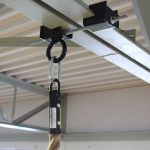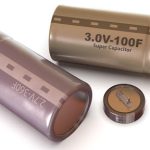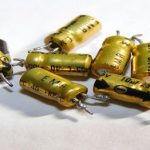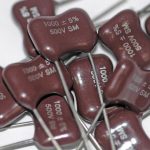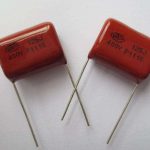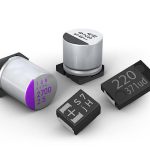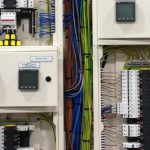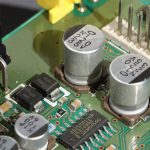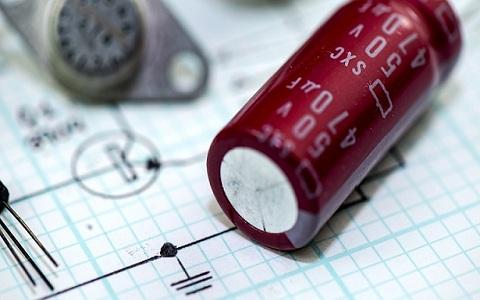
Capacitors and resistors are passive components in every electrical circuit to resist and store electrical energy. Generally, condensers are paper capacitors that feature two conducting surfaces parted by an insulating substance. The substance is known as the dielectric of the capacitor.
These circuits provide a low resistance channel to AC voltage and a high resistance path to DC voltage from one circuit to another. The capacitance of the Circuit is stored as the electric field. It restricts the direct flow of current and effectively opposes voltage flow in any electrical circuit. These capacitors are available in various packaging, types, and values depending on the application.
What is a Paper Capacitors?
Paper Capacitors are fixed capacitors that have paper as their dielectric material, and it stores energy in the form of an electric field. These capacitors are usually utilized at power line frequency and store fixed charge values. The dielectric is also covered in oil or wax to protect it from environmental effects. These capacitors are known to have a fixed capacitance value.
Construction of a Paper Capacitors
There are two types of paper capacitors based on their construction.
- Paper sheet capacitor
- Metalized capacitor
Paper Sheet Capacitor
Firstly, the development of the paper sheet capacitor needs two aluminum sheets and a paper sheet. The paper sheet is covered with wax or doused with oil to safeguard from the external climate. Paper capacitors are decent capacitors that store a proper measure of electric charge of fixed capacitance value. The paper sheet between the aluminum sheets goes about as a dielectric medium while aluminum goes about as a cathode.
As the paper is a terrible conductor of power, it doesn’t permit the progression of electric flow between the aluminum sheets, which permits the electric field through it and goes about as a hindrance of electric flow. Moreover, the paper sheets and two aluminum sheets are moved in a round and hollow shape, and the whole chamber is covered with wax or plastic resin to shield it from dampness in the air. The two-wire leads are picked from the ends of the two aluminum sheets.
Metalized Paper Capacitors
The paper is coated using a thin layer of aluminum or zinc in a metalized paper capacitor. This coated paper is then rolled in the form of a cylinder. The entire cylinder is bathed in oil or wax to protect it from dampness. The material used for coating the paper acts as the electrodes, and the paper acts as the dielectric. Paper capacitors constructed from zinc are very easily destroyed when a chemical reaction occurs. Therefore, aluminum is a popular choice in the construction of paper capacitors.
The size of the metalized paper capacitor is comparatively smaller than the paper sheet capacitor. In these capacitors, the aluminum is directly coated on the paper. Therefore, this capacitor’s aluminum layer is very slim compared to that of the paper sheet capacitor.
The main disadvantage of paper capacitors is that they can very easily absorb moisture from the air, which will, in turn, decrease the insulation resistance of the dielectric.
Working Principle of a Paper Capacitors
A paper capacitor is constructed with two metallic plates and features a dielectric material between them. These plates are positive and negative. When you apply a small charge to the plates, the positive charge will be attracted to one plate and the negative charge to the other plate. This electrical energy is always stored as an electric field. However, this stored energy is later on used through discharging of the capacitor. They are usually available in 500pF to 50nF and offer high leakage currents.
Applications of Paper Capacitors
- Paper capacitors are used in a wide variety of applications that include:
- Used in electronic and electrical applications.
- Useful for high voltage and high current applications.
- Used in automobile audio equipment systems to provide extra power to amplifiers when needed.
- Used in power conditioning systems to block DC signals and allow AC signals to pass.
- Effectively used in sensors to measure air humidity, mechanical strain, and fuel levels.
- Utilized in signal coupling, noise filtering, remote sensing, and decoupling systems.
- Effective for signal processing systems like speakers, tune circuits, radio receivers, dynamic random-access memory, analogue equalizers, and radio receivers.
Pros & Cons
The benefit of using a paper capacitor is that it provides a fixed amount of capacitance. Therefore, the capacitance value is fixed during manufacturing.
In conclusion, the main disadvantage of Paper Capacitors is that it absorbs the air moisture and reduces the dielectric’s insulation resistance. When it absorbs moisture from the air, the dielectric material will be affected.






